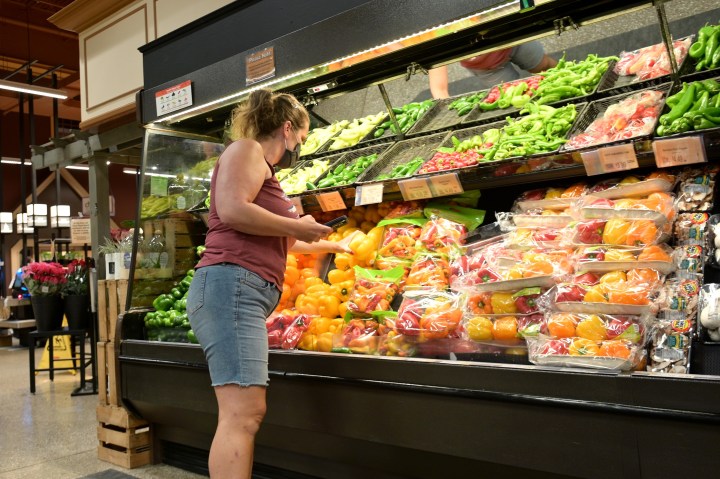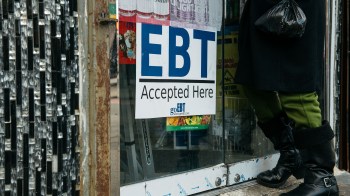
What a $30 monthly increase in food stamps means for recipients
Share Now on:
What a $30 monthly increase in food stamps means for recipients

People who receive food stamps will see a permanent increase beginning in October.
The Joe Biden administration has approved the largest boost in benefits from the Supplemental Nutrition Assistance Program, formerly known as the Food Stamp Program. Those benefits will rise more than 25% above pre-pandemic levels, from $121 to $157 a month for the average recipient.
“I’m really excited about this. I’m so happy we’re investing in families and children in this way,” said Kristin Butcher, the director of the Center on Children and Families at the Brookings Institution. “It’s going to lead to increased consumption of good food: more fruits, more grains, more fish, more poultry — things like that.”
The COVID-19 pandemic, which fueled record high unemployment rates last year, also increased the need for food stamps. Between February and June of 2020, the number of SNAP recipients rose from 36.8 million to 43 million — a roughly 6 million increase.
That population has shrunk slightly from its pandemic peak to 42.1 million in May 2021, the latest data available. To be eligible for SNAP benefits, households generally must have a gross income below 130% of the federal poverty line.
Butcher, who’s also an economics professor at Wellesley College, has conducted research simulating the effects of a $30 increase. Butcher and co-author Patricia Anderson found it would push up monthly spending on food by $19.48 per SNAP recipient.
The improved benefit would lead to the purchase of more nutritious foods and fewer fast food meals, their research showed. It would reduce food insecurity and allow recipients to spend more time cooking and preparing meals.
The country’s current SNAP benefits were based on the Agriculture Department’s low-cost Thrifty Food Plan, which represents the cost to purchase groceries for a family of four. The plan, which was introduced in 1975, is aimed at meeting the nutritional needs of someone eating “a healthy, cost-conscious diet,” according to the USDA.
The administration’s decision to reevaluate the plan is “long overdue,” said Vince Hall, the interim chief government relations officer at Feeding America, a nationwide network of food banks.
While SNAP is “America’s frontline defense against hunger,” Hall said, many families who rely on the program to meet their nutritional needs run out of benefits in the second or third week of the month.
“Those families then turn to America’s food banks to close the gap,” he said.
Based on an order in the bipartisan 2018 farm bill, the USDA conducted a review of the Thrifty Food Plan and updated its guidelines, taking into consideration current food prices, what Americans usually eat, and updated dietary and nutritional guidance. The bill also requires the USDA to reevaluate the Thrifty Food Plan every five years.
“The way that families prepare food and the type of nutrition they’re seeking is very different today than it was in 1975,” Hall said.
For example, he said the previous calculation assumed that families were purchasing dried beans. But while those cost less per serving than canned beans, they take more preparation time. The updated plan takes more convenient options into account, even if they cost more.
“We believe that continued improvement to SNAP is critical to achieving food security for the nation,” Hall said.
Complicating matters, though, inflation has made groceries more expensive in recent months. Food prices rose 0.7% between June and July, according to the consumer price index.
Hall said that Feeding America is very concerned about rapid price increases.
“Rising food prices undermine the ability of families who are earning low wages — or are in periods of temporary hardship — to be able to afford adequate nutrition,” Hall said.
On top of that, the 25% raise will go into effect after the temporary SNAP increases associated with the pandemic expire in September. The COVID-19 relief bill passed last year raised the maximum benefit by 15% (about a $28 monthly increase per person).
“When those fade out, people’s money from SNAP benefits is going to go down,” Butcher said. “And so this 25% increase is not going to be experienced as a 25% increase by most families.”
She said it’s going to feel more like an $8 increase, rather than a $36 increase.
“But if we didn’t do this, they would be left with these inadequate benefits,” Butcher noted.
Butcher said research has shown that investing in early-childhood nutrition yields long-term benefits — kids whose families have access to food stamps are living longer, healthier lives.
There’s a lot happening in the world. Through it all, Marketplace is here for you.
You rely on Marketplace to break down the world’s events and tell you how it affects you in a fact-based, approachable way. We rely on your financial support to keep making that possible.
Your donation today powers the independent journalism that you rely on. For just $5/month, you can help sustain Marketplace so we can keep reporting on the things that matter to you.


















